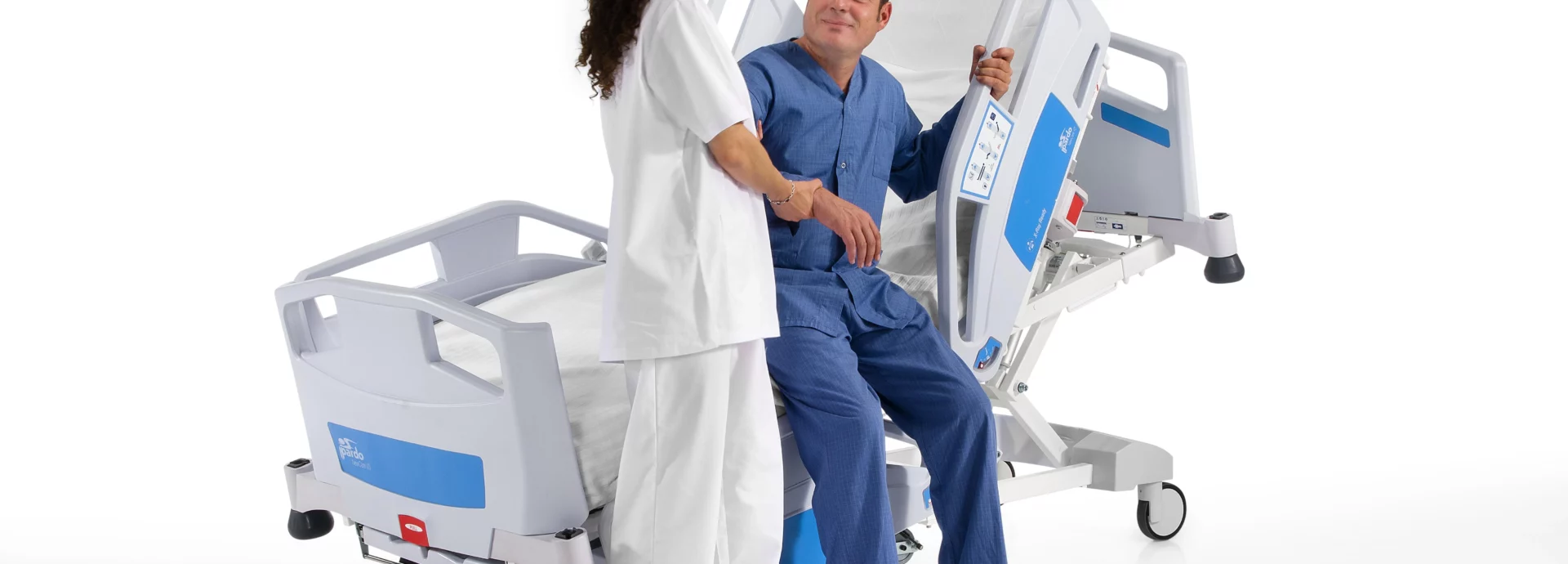What’s the difference between pressure relief and redistribution?
Posted on 5 April 2017 By Aaron Stretton

In This Article
With the rising awareness of pressure injuries and tissue viability in the UK healthcare sector at the moment, these phrases…
With the rising awareness of pressure injuries and tissue viability in the UK healthcare sector at the moment, these phrases get thrown around quite a lot. Especially when people are looking to buy specialist mattresses or chairs, surface structures and materials that can relieve and redistribute pressure are integral to ensuring that the patient doesn’t actually do more harm to themselves by being sat down or laid down. Knowing the difference between what they all do can be a bit challenging, so we’ve explained it below.
The Pressure Problem
Firstly, pressure has been the thorn in the NHS’s side for a very long time. Pressure ulcer care is around £2.1 billion of the NHS’s yearly budget, which is a lot of money to be losing when our services are as stretched as they are. This could also be minimised and avoided with the correct equipment that is designed to reduce pressure build-ups, and therefore reduce the pressure problem.
Our bodies react to pressure this way because of the structure of tissue. Soft tissue sits over hard, rigid, bony surfaces, and does not squash down under pressure, but rather it moves away from it entirely. Like when you press your foot into wet sand at the beach, the sand doesn’t squash down and then spring back up when you step off, it moves outwards and away from the source of pressure. This is exactly what soft tissue does, but if there is sufficient pressure for long periods of time, the tissue can break down and leave the bony area more susceptible to pressure ulcers.
This is precisely why pressure relieving and redistributing equipment is so important — it stops pressure build-ups from occurring, therefore slowing the entire pressure ulcer process. Physical pressure is measured within surfaces in terms of interface pressure (IP). The IP helps us identify what kind of pressure treatment the equipment is providing (redistribution, relief, reduction, etc). Pressure redistribution tend to be static and therefore will have a constant IP measurement. However, pressure relief surfaces are more likely to have an alternating or cyclical IP measurement. This is primarily how we can tell the difference between pressure prevention methods in equipment.
Pressure Redistribution
As you can tell from the name, pressure redistribution spreads the pressure more evenly across the surface of the cushion or mattress. This reduces the amount of pressure put on any one part of the body (particularly hardened, rigid areas). The patient’s body weight is redistributed across the surface, which also reduces the chance of skin shearing. Pressure redistribution has a constant IP measurement, reflecting the fact that it is an evenly spread system that targets the user’s entire body rather than specific areas.
Pressure redistribution surfaces maximise skin contact, giving a constant, even IP. This is the ideal used in low-air-loss and some foam mattresses. Lightweight polyurethane foams are structured to squash and shape around the patient’s body, taking into account certain areas that may undergo more pressure than others (i.e. the ankles, elbows, shoulder blades). This has led to the development of more sophisticated material structures, like laminated surfaces and cut-foam mattresses that offer pressure redistribution in their unique designs. Low pressure therapy mattresses (like the Genius) also offer pressure redistribution by having consistently low air pressure circulate through the mattress to spread the user’s weight. It’s similar to low air loss therapy, but the air stays in the mattress so that when the pump is switched off, the mattress doesn’t completely deflate.
Pressure Relief
Pressure relief actually counteracts pressure build-ups by specifically targeting high pressure areas of the body. These surfaces are often structured in cells of air that can inflate and deflate according to the setting. For instance, on a mattress you may find that the patient’s heels and lower legs are more at risk of pressure injuries, and so it is beneficial to reduce the pressure in the lower third of the mattress every so often. This is where alternating-air technology steps in. This cyclical system moves the pressure around the mattress at equal time intervals according to the patient’s needs, therefore reducing the opportunity for pressure build-ups over a long time (which also gives the mattress an undulating IP measurement). This is a prime example of pressure relief.
The amount of pressure relief that can be achieved depends on a lot of variables. For example, the mattress cover material, cycle time, and air pressure in the cells themselves. The patient’s weight and position are also important factors to think about when it comes to optimum pressure relief, as this too can affect air pressure and the internal workings of the equipment.
Pressure relief and redistributions are two different things that offer similar results. They both aim to reduce pressure build-ups for individuals who are laid or sat down for a long time, and will ultimately save the NHS and any other health services a lot of money in the long run. They also provide the patient with a better quality of care and life as they do not cause as much harm as traditional cushions and mattresses. Just remember that redistribution spreads the weight, and relief targets problem areas.
We think you might also be interested in...
Speak to The Experts
Need assistance with product enquiries, general inquiries, or product support? Our Phonelines are open 9am - 5pm Monday to Friday
0113 519 0319
Or, fill out the form for a call back.
